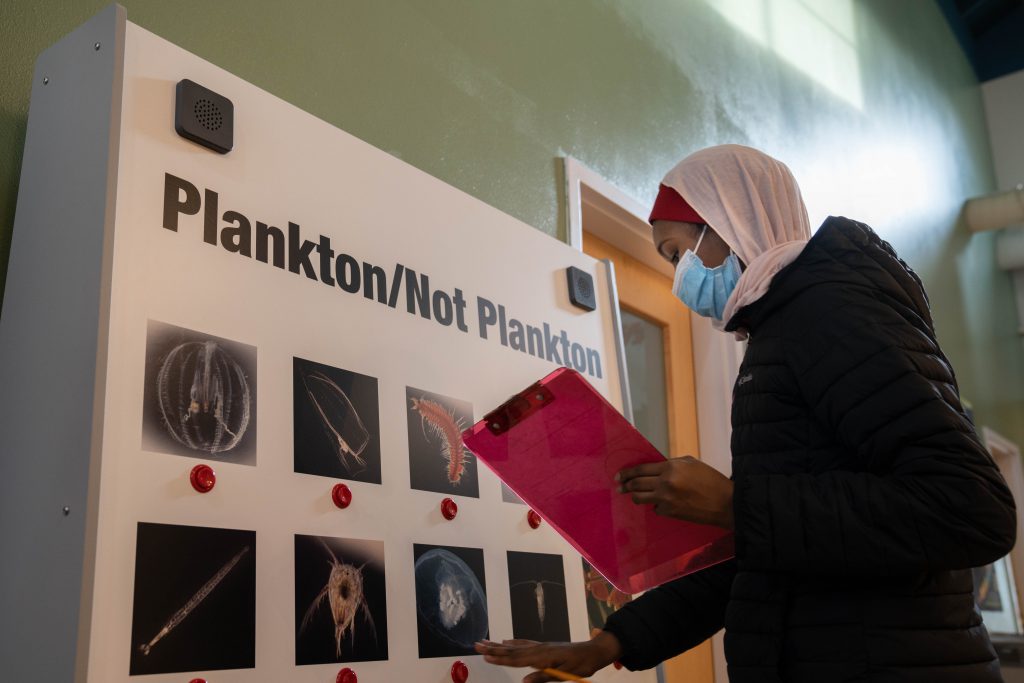
When you think about the ocean and the species that live there, you might think first about orcas or dolphins or sharks—big, charismatic animals prominent in our myths, stories, and nature documentaries. Or you might think of swirling schools of herring or tuna, or the deep-sea-illuminating adaptations of anglerfish or lanternfish. But one of the most common lifeforms in the ocean is one you might not think about very often: plankton. Highline College’s MaST Center Aquarium, the University of Washington’s Museology Program, and foundry10 have created a new travelling exhibit that reveals the dynamic and captivating worlds of plankton that exist in our waters.
Plankton is not a single organism, but a varied group of many kinds of tiny organisms that includes bacteria, algae, single-celled protozoans, jellyfish and comb jellies, small crustaceans like copepods and krill, and the larval forms of crabs, oysters, and some fish, among many others. Plankton drift with the currents and tides, which is how the name arose: “plankton” comes from the Greek word for “wandering” or “roaming.” Scientists estimate that one type of plankton, a single-celled marine bacteria called SAR11, is the most common organism in the ocean and possibly the entire planet.
Scientists estimate that one type of plankton, a single-celled marine bacteria called SAR11, is the most common organism in the ocean and possibly the entire planet.
“Plankton play much more of an important role than we realize,” said Aeriel Wauhob, community engagement coordinator at the MaST Center Aquarium. “They’re such a huge source of oxygen. And the largest migration happens every day in our waters—zooplankton travel from the depths up to the surface of the water. They actually create microcurrents from that transition every night. What happens if that starts to disappear?”
The exhibit focuses on different types of plankton, showing their roles in the ecosystem and how they form a vital part of the food web. The exhibit will also include an interactive game, Franken-Plankton, where visitors can build their own types of plankton. Wauhob explains that, after seeing the first part of the exhibit, visitors will know the different types of plankton and they’ll know what features help plankton survive, so they can use that knowledge to build a new species. Visitors will also have the chance to look at live samples of plankton under microscopes and identify the different species. The last station of the exhibit includes a call to action for visitors to improve the ecosystem and ensure that Puget Sound plankton continue to thrive.
It’s fitting that an exhibit about a wandering lifeform will also wander around the Puget Sound region—the MaST Center Aquarium will host the exhibit for three months starting in January, but then the exhibit will travel to Langley on Whidbey Island, where the Langley Whale Center will host it for another three months. Wauhob said that other community marine science centers around the Sound will have a chance to showcase the exhibit over the next few years.
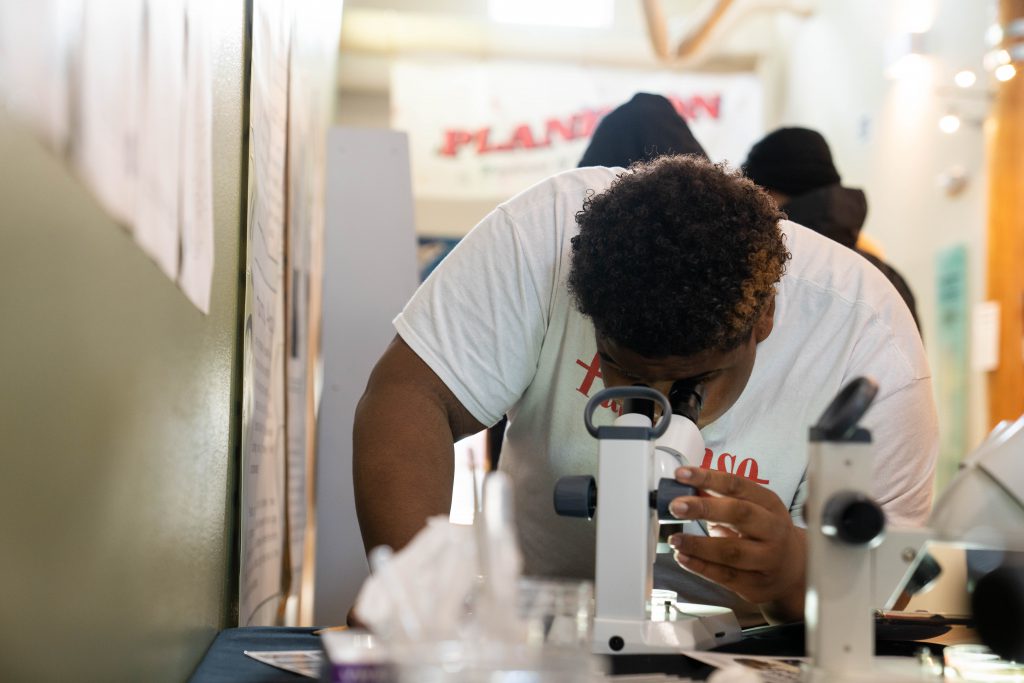
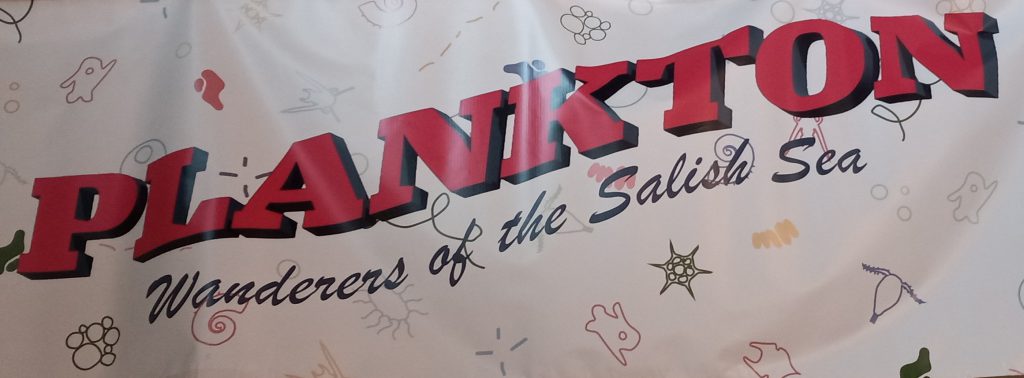
Highlighting the small stuff
How do you build an exhibit around microscopic organisms that don’t really move on their own? What’s the best way to get people interested in lifeforms that are essential for the food web but that also look and live and function in ways that are wildly unfamiliar?
As Wauhob explains, the genesis of the exhibit arose by happy accident. Last year, the MaST Center Aquarium’s plankton sampling in the waters near the aquarium yielded both phytoplankton (plant and single-celled plankton) and zooplankton, which presented a good opportunity for a brief rotating exhibit. The MaST Center Aquarium set up special microscopes so visitors could observe the live plankton samples and take photos and videos of the plankton with their phones. “Most people have never seen plankton like that,” Wauhob said. “With the visitors taking pictures—they could share that with other people.”
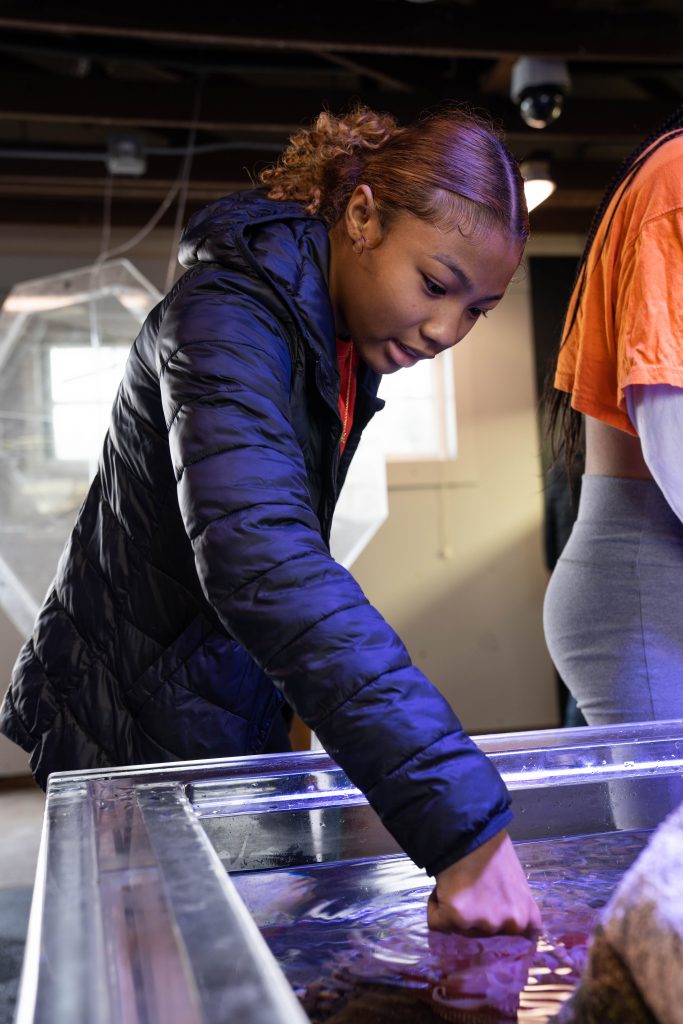
Around the same time, foundry10, an educational research organization that focuses on expanding ideas about learning, partnered with Community Marine Science Centers of the Salish Sea, a group of centers that includes the MaST Center Aquarium, the Marine Life Center in Bellingham, the Port Townsend Marine Science Center, the Puget Sound Estuarium in Olympia, and many others.
The relationship that foundry10 has with the MaST Center Aquarium and other community marine science centers naturally gave rise to the idea for a project: a travelling exhibit that could move from center to center.
Travis Willingham Windleharth, senior researcher at foundry10, explained that in spring 2022, foundry10 was invited to teach a directed field work course with University of Washington museology graduate students. The relationship that foundry10 has with the MaST Center Aquarium and other community marine science centers naturally gave rise to the idea for a project: a travelling exhibit that could move from center to center.
When representatives from foundry10 visited the MaST Center Aquarium to see the space and how the public interacted with the facility, Wauhob said that it became clear that a plankton exhibit would work well. “Nobody really focuses on plankton because it’s so small,” she said. “The focus is usually on megafauna. We wanted to highlight the small stuff.”
Windleharth worked with University of Washington museology graduate students Wren Thompson and Tony Thomas, among others, on the plankton exhibit. Thompson worked on the game design for the Franken-Plankton game, using 3D-modelling software, and created digital additions to the exhibit, including a plankton-inspired personality quiz. She also worked on the production of the exhibit and an evaluation study. Thomas managed digital aspects of the exhibit, built a website to accompany it, and worked on the graphic design and art teams. He also helped with the fabrication and installation of the exhibit at the MaST Center Aquarium.
“My greatest hope is that this exhibit sparks that passion. It opens up a whole new world that we’re not usually interacting with or notice.” — Aeriel Wauhob
Both Thompson and Thomas said they’re optimistic that the exhibit will get visitors excited about plankton. Thomas said he hopes people “understand plankton and how they interact with the overall ecosystem.”

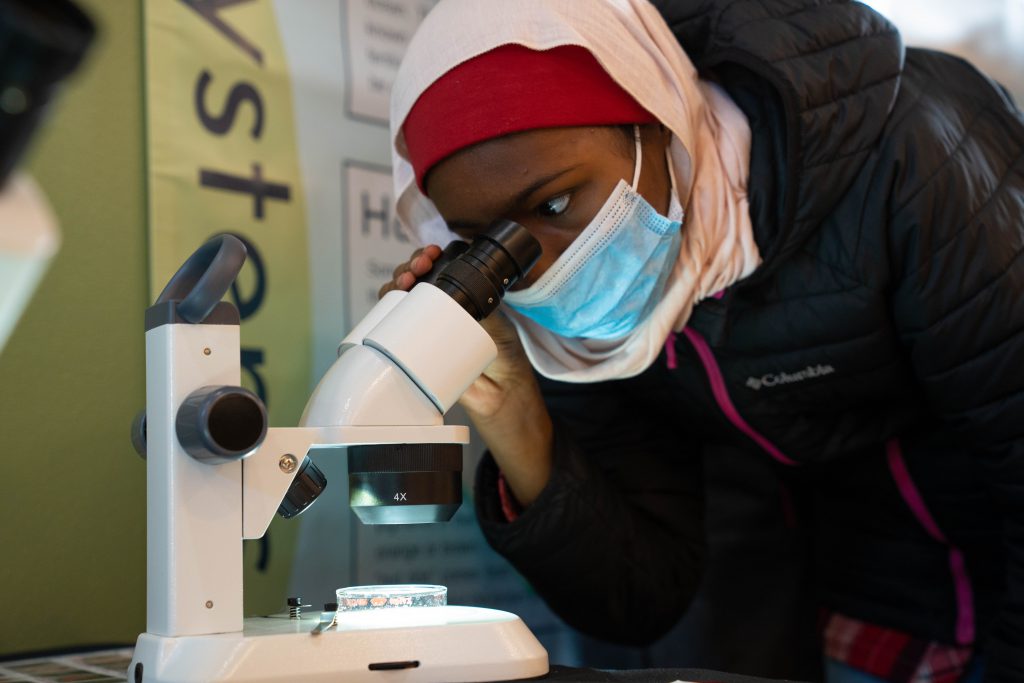
“Plankton are so important, but they’re not exactly the most charismatic subjects on the surface,” Thompson added. “It’s a challenge to hook someone into thinking about plankton. They’re so small and their effects on our lives can seem nonexistent and ephemeral. I’m hoping this exhibit can really break past that and make plankton something people are curious about, that they think about when they look at their local seas.”
Windleharth echoed their enthusiasm and spoke about his team’s goals for the exhibit. “We hope that youth from eight communities [around the Sound] will benefit from this asset,” he said. “And we hope that youth will understand and internalize their role in relation to Puget Sound health.”
Wauhob recalled one young person in particular who loved seeing plankton up close. “One visitor—10 years old, coming in with her dad—was so excited using a microscope,” she said. “She hadn’t really used microscopes before we taught her how to use them. And she spent an hour at that station looking through this plankton, trying to identify them, and she came every week. She was one of the first ones to find a sea star larva that was in our sample. That got her so interested and she is now a volunteer with us. My greatest hope is that this exhibit sparks that passion. It opens up a whole new world that we’re not usually interacting with or notice.”
The MaST Center Aquarium will host the plankton exhibit from Jan. 13 to March 25. The MaST Center Aquarium is open to the public on Saturdays from 10 a.m. to 2 p.m.
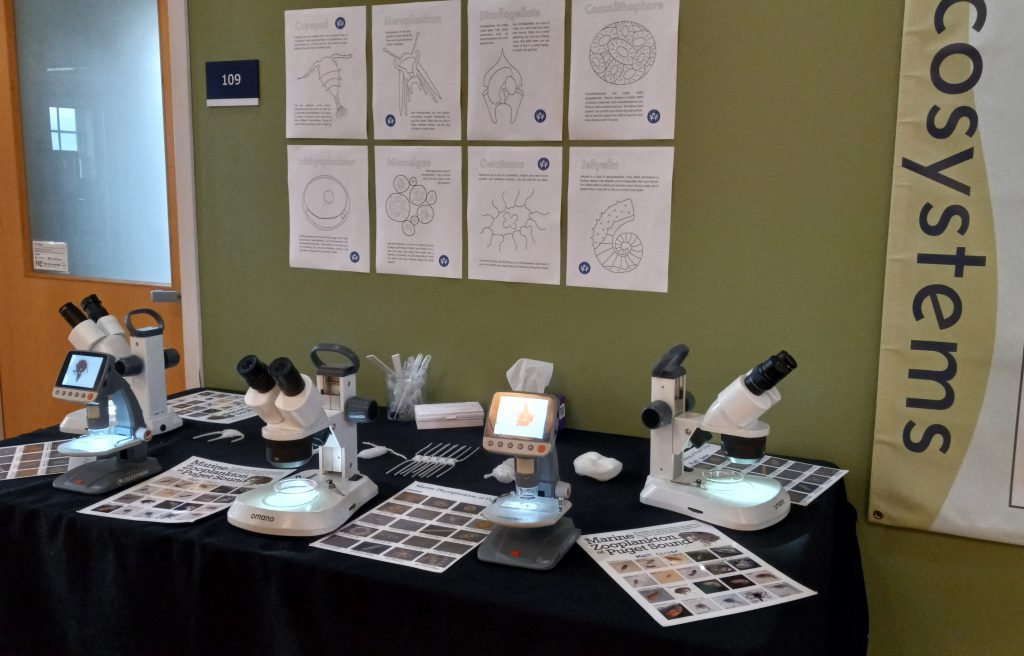
Thanks to the following for their contributions to the article: Curtis Rogers, Travis Willingham Windleharth, Aeriel Wauhob, Wren Thompson, and Tony Thomas.

